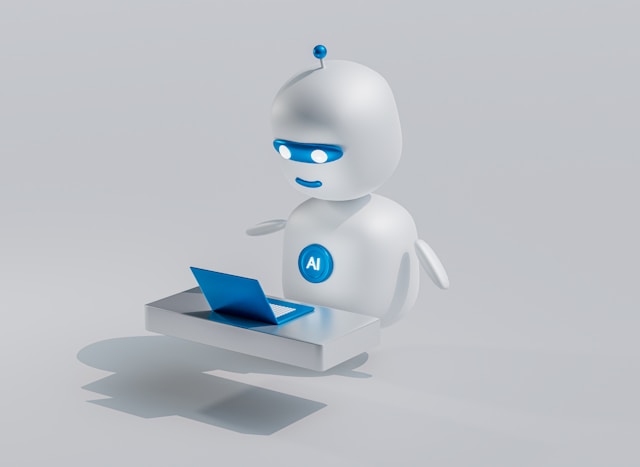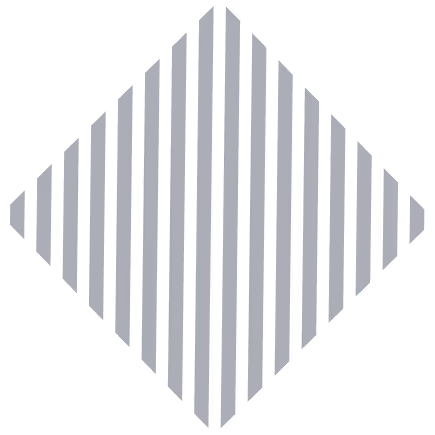AI Chatbot for Recruitment: Enhancing Hiring Efficiency and Candidate Experience

Have you ever lost great candidates because your hiring process took too long?
Sorting through resumes, scheduling interviews, and sending updates can feel endless, and that’s where an AI chatbot steps in to help.
Recruitment chatbots powered by platforms like HRMLESS simplify your hiring workflow by automating key tasks like pre-screening, scoring, and scheduling. You engage candidates 24/7, reduce ghosting, and fast-track only the most qualified talent, all without extra stress on your team.
Think of it like this: your AI interviewer keeps working while your recruiters sleep. No delays, no missed messages, just smooth, automated hiring that keeps your pipeline moving.
With Nerva AI at the core, HRMLESS ensures every candidate is informed, scheduled, and nurtured through the process without manual back-and-forth.
In this blog, we will talk about:
- What recruitment chatbots do and how they have evolved
- How they improve candidate experience while reducing your workload
- What to look for when choosing the right AI chatbot for your hiring needs
Let’s explore how you can enhance hiring efficiency without sacrificing your candidates' quality or peace of mind.
What Is an AI Chatbot for Recruitment?
An AI chatbot for recruitment is a tool that helps you handle hiring tasks through automated conversations. It speeds up screening, answering questions, and scheduling while improving candidate engagement. You’ll learn what these chatbots do, how they evolved, and their main features.
Definition and Core Functions
An AI chatbot for recruitment is a software assistant that talks with job seekers by text or chat. It collects resumes, answers FAQs, and screens applicants based on your criteria. This makes hiring faster by automating early tasks that usually take time. Instead of waiting for HR staff, candidates get instant replies, keeping them interested.
The chatbot can also schedule interviews and send reminders. By automating these steps, you remove repetitive work and focus on top candidates.
Evolution of AI in HR Tech
Recruitment chatbots began as simple bots answering questions. Over time, they grew smarter with AI and natural language processing. Today, they work more like real recruiters by understanding intent and context. Modern chatbots do more than chat; they apply AI to score candidates, reduce bias, and handle bulk applications easily.
This evolution helps companies save time and reduce errors during hiring. Our tool uses advanced AI technology to automate interviews and pre-screening.
Key Features of Recruitment Chatbots
Recruitment chatbots offer features that improve hiring speed and quality:
- 24/7 Candidate Engagement: Chatbots interact anytime, so you don’t miss talent.
- Automated Screening: They review resumes and score candidates quickly.
- Scheduling Interviews: Bots coordinate times with candidates to reduce no-shows.
- Answering FAQs: Candidates get instant answers about the job or process.
- ATS Integration: Chatbots sync with your systems to keep data organized.
- Analytics: Track performance and hiring bottlenecks in real time.
With these tools, you save hours per hire and focus on candidates who fit best.
Benefits of Using AI Chatbots in Recruitment
AI chatbots clearly improve your hiring process. They save you time, make the candidate experience smoother, and help reduce screening biases.
Efficiency and Time Savings
AI chatbots handle repetitive tasks like answering common questions and scheduling interviews automatically, reducing your team's time spent on manual work.
You can cut your time-to-hire by up to 60% because chatbots engage candidates instantly, screen resumes quickly, and schedule interviews without delays.
With our tool, pre-screening and scoring are automated, allowing you to manage many open roles without extra effort. By eliminating manual scheduling and follow-up tasks, you save roughly 2.7 hours per hire.
Enhanced Candidate Experience
Candidates receive quick responses and clear updates at every step. Chatbots are available 24/7, so candidates can complete AI interviews on their own schedule. Real-time engagement through SMS and email reminders keeps candidates informed and reduces no-shows by half. This makes the process more transparent and respectful of candidates’ time.
By offering a smooth, conversational experience, chatbots help you keep candidates interested and reduce dropouts or ghosting.
Reduction of Bias in Screening
AI chatbots use scoring algorithms to focus on candidate qualifications, minimizing unconscious bias in manual screening. This helps you evaluate candidates fairly based on skills, not on background or demographics.
Automated systems consistently apply the same criteria to every candidate. This reduces errors or biased judgments when humans review resumes or conduct first interviews.
How AI Chatbots Work in the Hiring Process
AI chatbots handle several key steps in recruiting to save you time and improve candidate quality. They interact with applicants, analyze their information, and automate scheduling, all while keeping the process fast and fair.
Pre-Screening Candidates
AI chatbots start by engaging candidates right after they apply. They ask relevant questions to collect basic information and assess qualifications based on your job criteria. This happens 24/7, so candidates complete pre-screening on their own schedule. The chatbot scores and filters candidates automatically.
It identifies those best matched to your role, so you only review qualified applicants. This reduces bias because chatbots apply the same standards to everyone.
Interview Scheduling Automation
Once candidates pass screening, AI chatbots manage interview scheduling without manual follow-up. They check your calendar and offer open slots to candidates through SMS or email. This system sends reminders to reduce No-Shows by up to 50%. It also allows candidates to reschedule easily, so your interview workflow stays organized and efficient.
Automated scheduling frees your team from back-and-forth emails and saves you about 2.7 hours for every hire. HRMLESS integrates with your existing ATS and calendar tools.
Resume Parsing and Analysis
AI chatbots use resume parsing to quickly extract key information like skills, experience, and education. This data is converted into structured formats that your hiring system can understand.
The chatbot then compares candidate profiles against your job requirements using natural language processing (NLP). This helps predict which candidates are likely to succeed. With AI parsing, you get faster insights and can focus on high-potential candidates sooner.
Choosing the Right AI Chatbot for Recruitment
Picking the right AI chatbot means focusing on how it fits your hiring process and tools. You want a system that brings speed, quality, and ease without creating extra work. Look closely at features, integration options, and how well the chatbot adapts as your needs change.
Key Criteria and Capabilities
Start by checking whether the chatbot can handle candidate screening, answering questions, and scheduling interviews. It should use natural language processing to interact clearly and quickly.
You’ll want features such as:
- Automated pre-screening to filter candidates based on your criteria
- Candidate engagement tools like SMS or email nudges
- Scoring systems to rank applicants
A good chatbot improves candidate quality by moving only the best forward and reduces no-shows by keeping candidates engaged.
Integration With ATS and HR Tools
Your chatbot should work smoothly with your existing ATS (Applicant Tracking System) and other HR software. This lets you keep all candidate data in one place without double entry or extra steps.
Look for:
- Seamless data syncing to update candidate profiles automatically
- Scheduling automation integrated with your calendar systems
- Compatibility with payroll, HRIS, or background check platforms
The right chatbot fits your workflow, so you save time and reduce mistakes during hiring.
Customization and Scalability
Choose a chatbot that you can tailor to your job roles, hiring needs, and company tone. Custom questions, scoring rules, and engagement messages help you maintain your brand and hiring standards. Also, pick a solution that scales with your growth. Whether you recruit for two roles or 200, it should handle volume without extra cost or complexity.
For example, our tool offers flexible plans and custom AI interview flows, helping you automate without losing control as hiring demands increase.
Real-World Applications of AI Chatbots in HR
AI chatbots in recruitment help you handle large numbers of applicants and easily manage specific hiring events. They speed up your process by automating candidate screening and engagement while keeping quality high and bias low.
Volume Hiring Solutions
When you need to fill many roles quickly, AI chatbots become essential. They automatically screen resumes to find candidates with the right skills. This reduces the time spent manually reviewing applications and quickly highlights top talent. Chatbots also conduct initial interviews 24/7.
This means candidates can respond on their own time, improving engagement and reducing delays. Automated scheduling further reduces no-shows by ensuring only interested candidates book interviews. Using a platform like ours lets you track candidate progress in real time. You can see where bottlenecks happen and adjust immediately. This helps lower your time-to-hire by more than half, saving you hours per hire.
Campus Recruitment Automation
AI chatbots simplify managing hundreds or thousands of student applicants for campus hiring. They screen and rank candidates based on skills and experience, so you focus only on the best fits. Chatbots handle FAQs about job roles, benefits, and application status. This reduces your workload on routine questions and keeps candidates informed instantly.
AI-driven interviews help you assess candidates fairly and without bias, which is essential when hiring fresh graduates. To avoid conflicts, you can also integrate scheduling tools that sync with campus calendars. With our tool, you automate follow-ups and reminders via SMS or email. This keeps candidates engaged and lowers the chances of losing talent due to slow communication or unclear next steps.
Challenges and Limitations of Recruitment Chatbots
Using AI chatbots in hiring brings clear benefits but also specific challenges. You must carefully manage data privacy, handle complex candidate questions, and keep a human feel in your process.
Data Privacy and Security
Recruitment chatbots collect sensitive candidate information, such as resumes, contact details, and work history. Laws like GDPR and CCPA require protecting this data. You must ensure your chatbot platform uses strong encryption and secure storage. Unauthorized access or data leaks can harm your reputation and violate privacy rules.
You should also be transparent with candidates about what data you collect and how it’s used. Ensuring compliance reduces legal risks and builds candidate trust. For example, our tool uses secure systems to keep your candidate data safe while automating screening and scheduling.
Handling Complex Candidate Queries
Chatbots work well with scripted or common questions, but they struggle with detailed or unusual requests. Candidates often want to explain unique situations, ask about benefits, or clarify job roles in ways that require more than canned responses.
Candidates may get frustrated or feel ignored if your chatbot can’t answer these correctly. It’s essential to design bots that quickly escalate complex queries to human recruiters. Advanced AI tools, like those from our tool, use natural language understanding to improve responses but still rely on human backup when needed.
Maintaining a Human Touch
Recruitment is personal. Candidates want to connect with employers beyond automated chats. Purely bot-driven communication can feel cold or robotic, reducing candidate engagement. You must use chatbots to free up recruiter time on routine tasks while keeping humans involved in interviews and feedback.
Your chatbot should sound conversational but not replace genuine human interaction. Using AI for scheduling, screening, and initial engagement, you create space for meaningful conversations later.
Future Trends in AI Recruitment Chatbots
AI chatbots will continue to make recruitment faster and smarter. They will help you screen candidates, predict who fits best, and engage them better.
Advances in Generative AI
Generative AI lets chatbots create personalized conversations with candidates. This means your chatbot can answer questions naturally, give detailed job info, and simulate real interviews. Chatbots will adapt tone and language based on the candidate’s style, keeping candidates engaged longer and improving their experience.
It also reduces the need for human input during initial screening. With this tech, you can automate complex tasks like creating customized assessments or interview questions on the fly. This makes your hiring process quicker and more relevant. Our tool uses generative AI to handle full conversational interviews, so your candidates feel like they’re talking to a real recruiter, 24/7.
Predictive Analytics in Talent Acquisition
Predictive analytics helps your chatbot forecast which candidates will succeed. It analyzes data from resumes, interviews, and assessments to score applicants based on job fit and potential. By using this, you reduce time wasted on unqualified candidates. Your AI can focus your attention on those who closely match your requirements.
These insights help you spot trends such as which skills predict success. They also reveal which backgrounds lead to longer employee retention. Our tool combines predictive analytics with automated scheduling to fast-track hiring without losing quality. This means fewer no-shows and better hires.
Key benefits of predictive analytics:
- Prioritize high-potential candidates quickly
- Reduce human bias by relying on data
- Improve the quality of hire with more innovative scoring
Implementing and Measuring AI Chatbot Success
To make an AI chatbot work for recruitment, you must set it up and train your team correctly. You must also track specific data points to see if the chatbot is hitting your goals. This helps you improve the process and get better results.
Onboarding and Training
Start by clearly defining what the chatbot will do in your recruitment workflow. Train your HR staff and hiring managers on how the chatbot interacts with candidates. Show them how to update questions, set screening criteria, and handle exceptions. Ensure your chatbot connects smoothly with existing systems, like ATS and scheduling tools.
This reduces confusion and boosts adoption. Use hands-on training sessions and real examples to build confidence. You want your team ready to manage the chatbot and interpret its reports. HRMLESS uses simple setups so your team can get started quickly without technical headaches. Onboarding should focus on ease and clear roles.
Key Performance Indicators
Measure chatbot success using specific metrics tied to your recruitment goals. Key Performance Indicators (KPIs) to watch include:
- Time to Hire: How much faster are you moving candidates through screening and scheduling?
- Candidate Engagement: Track response rates to chatbot messages via SMS and email.
- No-Show Rates: See if automated scheduling cuts down on missed interviews.
- Qualified Candidates: Monitor how many candidates move past screening to the next steps.
- Reduction in Bias: Analyze if diverse candidates advance at expected rates.
Use dashboards that combine these KPIs for real-time insights. This helps you spot bottlenecks early and improve automation settings.
Cost Considerations for AI Recruitment Solutions
Understanding the cost structure is key when adopting an AI chatbot for recruitment. You’ll face some upfront expenses like software licenses and subscription fees. These costs cover the AI platform, regular updates, and access to features like automated scheduling and candidate screening. Compared to traditional hiring, AI recruitment often lowers overall costs.
Traditional methods can cost around $4,700 per hire, including agency fees and lost productivity. AI solutions like ours reduce these by automating tasks, saving time and money.
Here’s what you’ll typically pay for with AI recruitment:
- Setup fees: One-time costs to get the software running.
- Subscription fees: Monthly or annual charges for platform access.
- Training: Some expenses for staff learning how to use the system.
- Integrations: Connecting your AI tool to ATS or HRIS may add costs.
AI chatbots automate manual tasks and reduce no-shows by 50%, lowering hidden expenses. You save hours per hire by removing back-and-forth communication through SMS and email nudges.
Wrapping It Up
How we hire is changing, and AI chatbots are leading the shift. By automating repetitive tasks, improving candidate engagement, and cutting time-to-hire in half, they help you scale without sacrificing quality or control. Whether you're filling two roles or two hundred, tools like HRMLESS ensure that the right candidates move forward faster, fairly, and without chaos. It’s not about replacing recruiters, it’s about giving your team more time to focus on what really matters: making the right hires.
Kill the chaos. Automate your hiring with conversational AI interviews. Book a demo or start your free trial with HRMLESS today.
Frequently Asked Questions
Wondering what else an AI chatbot can really do in recruitment? You’re not alone. Beyond screening and scheduling, people often question the day-to-day impact, integration challenges, and maintaining a human feel while scaling automation.
Here are some fundamental questions recruiters and hiring managers ask, with clear answers to help you decide whether a recruitment chatbot fits your team.
Can AI chatbots personalize communication for different job roles?
Yes, advanced chatbots like HRMLESS allow custom interview flows per role. This means candidates applying for technical jobs may get skill-based questions, while marketing applicants receive culture-fit prompts, keeping the experience relevant and engaging.
Do chatbots replace the recruiter entirely?
Not at all. Chatbots handle the heavy lifting, like screening and scheduling, so your team can focus on meaningful interviews and decisions. They’re designed to support, not replace, human judgment in the hiring process.
What if a candidate has a unique question that the chatbot can't answer?
Innovative platforms route complex or unusual questions to human recruiters. This ensures no candidate feels ignored, and every inquiry, no matter how niche, gets a response that builds trust in your hiring process.
How fast can I start using a recruitment chatbot?
Most platforms like HRMLESS offer quick onboarding and seamless ATS integration. With the proper setup, you can start automating interviews and scoring candidates in just a few days, without disrupting your current workflow.
Can chatbots handle multilingual candidate engagement?
Yes. Some AI chatbots support multi-language conversations, making it easier to connect with global applicants. This improves candidate experience, especially for roles with international reach or diverse applicant pools.
Featured
Subscribe to ournewsletter
Related posts
Explore the world of photography with our curated selection of
portfolio websites that showcase creativity and innovation.





